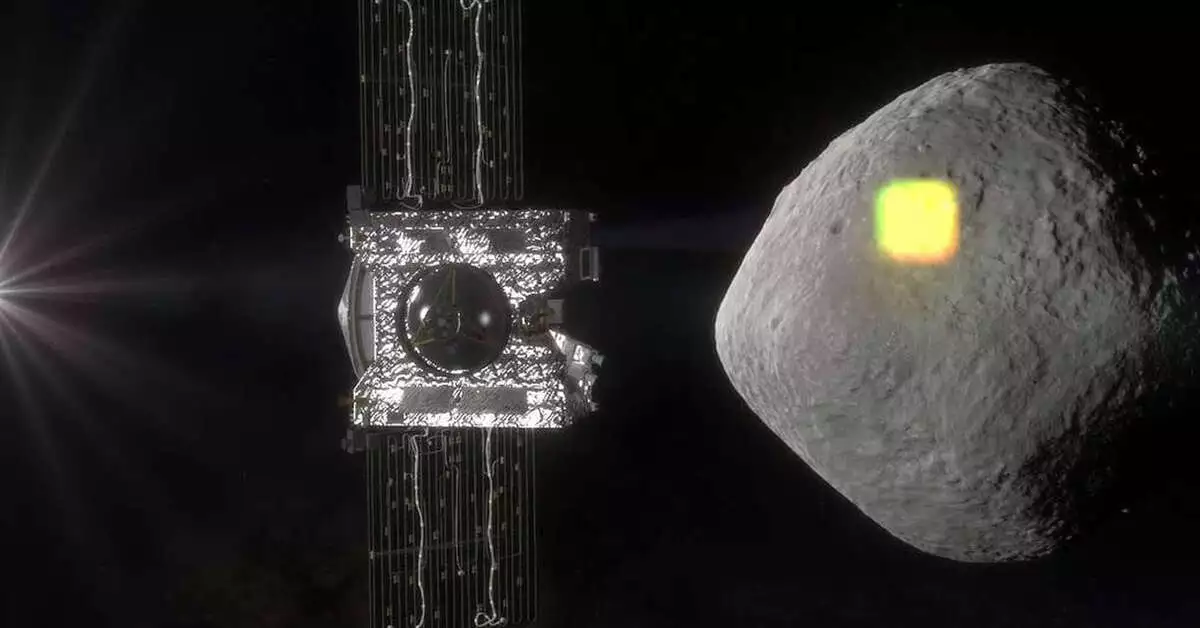Intriguingly Slow Unboxing of Priceless Asteroid Dust Samples
NASA’s ambitious mission to retrieve 4.5-billion-year-old asteroid dust samples has hit a cosmic snag. The blame? The overenthusiastic OSIRIS-REx spacecraft, which returned to Earth with an unexpected bounty of space treasure.

Launched in 2016, this groundbreaking probe marked NASA’s maiden voyage to collect ancient space rocks. Equipped with a nimble robotic arm, OSIRIS-REx was designed to scoop up regolith from the asteroid Bennu’s surface and store it safely within its TAGSAM (Touch-and-Go Sample Acquisition Mechanism) head.
The daring sample collection operation took place in 2020. Even then, mission control knew that the probe had gone above and beyond, snagging more than the targeted 60 grams of dust and rock, thanks to a TAGSAM material leak. Despite the hiccup, the probe triumphantly returned to Earth, touching down in a Utah desert just last month.
Now, NASA is playing it safe to prevent any mishaps while handling this precious cosmic cargo, particularly due to dust on the capsule’s exterior.
Explaining the delay, Deputy OSIRIS-REx Curation Lead Christopher Snead stated, “The ‘problem’ we have is the best kind – we have so much material that it’s taking longer than expected to secure it. There’s a wealth of material outside the TAGSAM head that’s scientifically intriguing. Having all this material is truly spectacular.”
ALSO READ: Revolutionary AI Test Unveils Path to Uncovering Alien Life
For eager scientists eager to examine these ancient dust samples, patience is now the name of the game. NASA is meticulously working to extract and analyze the material. They’re focusing on examining the dark particles adhering to the inside of the TAGSAM’s canister lid and base first, while the bulk of the sample remains securely sealed within.
Lindsay Keller, a member of the OSIRIS-REx sample analysis team, shared, “We have an arsenal of microanalytical techniques at our disposal to thoroughly scrutinize this material, nearly down to the atomic level.” The results will offer a tantalizing glimpse into what awaits when NASA finally pries open the canister, sending samples to labs worldwide.
NASA’s mission goes beyond just unboxing asteroid dust; they’re keen to delve into Bennu’s chemical composition, investigate the presence of hydrated minerals or organic compounds, and assess its heat absorption and release capacity. To achieve this, the samples will undergo intense scrutiny, including scanning electron microscopy, infrared measurements, and x-ray diffraction.
ALSO READ: James Webb Space Telescope Uncovers Astonishing Discovery: The Enigma of Jupiter Mass Binary Objects
As for the crucial unboxing process, once every speck of dust is safely secured within the TAGSAM head, it will be transferred into a specially designed container. This meticulous approach ensures the sample remains uncontaminated until it’s ready for scientific exploration.
Bennu, a seemingly disorganized heap of rocks, likely formed from a larger asteroid’s fragmentation. Scientists believe that celestial objects like Bennu may have played a pivotal role in delivering water and organic molecules to Earth, ultimately contributing to the world you know today.









